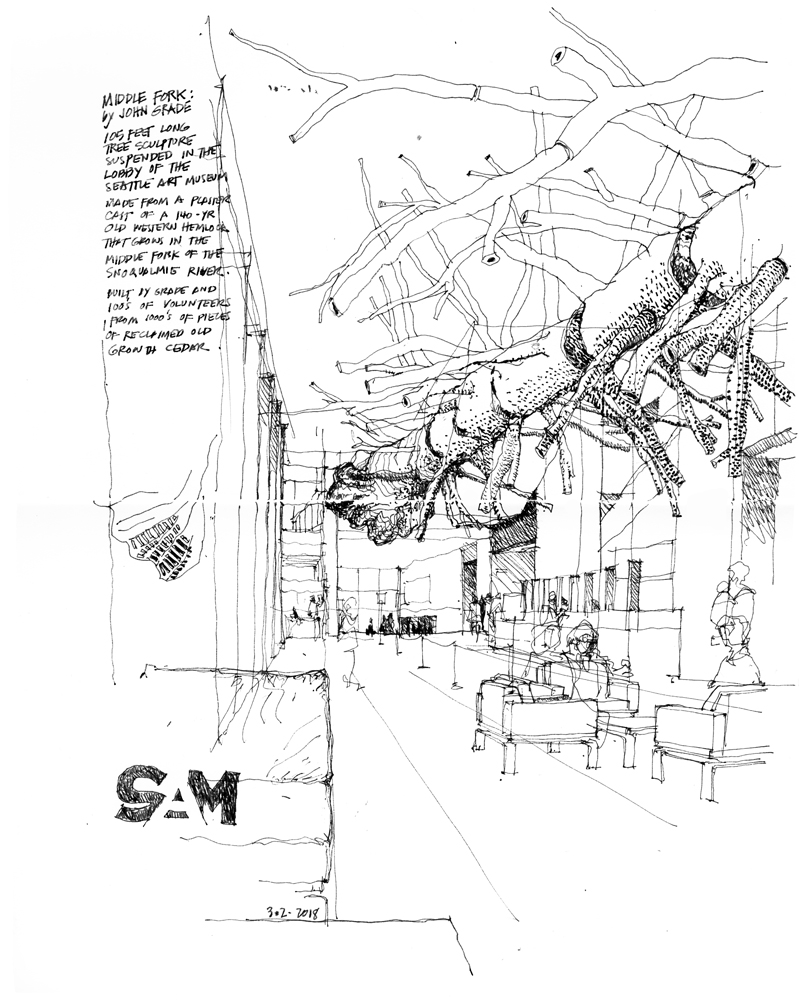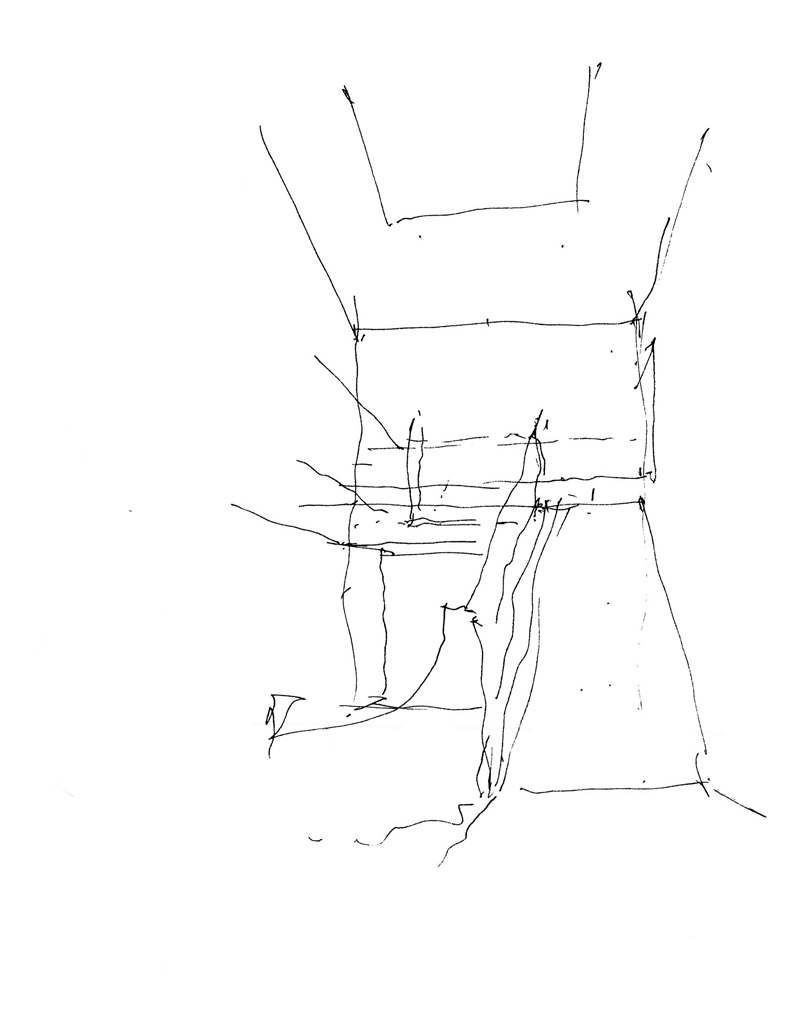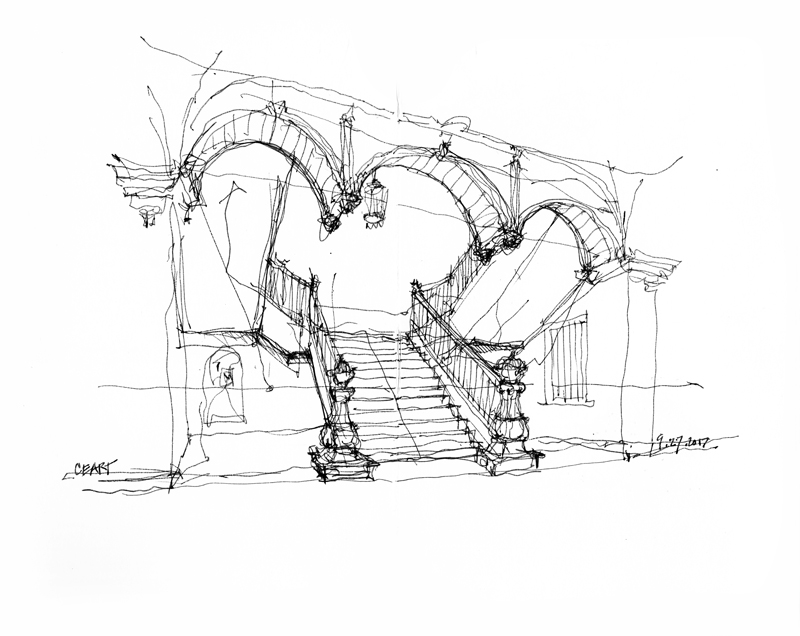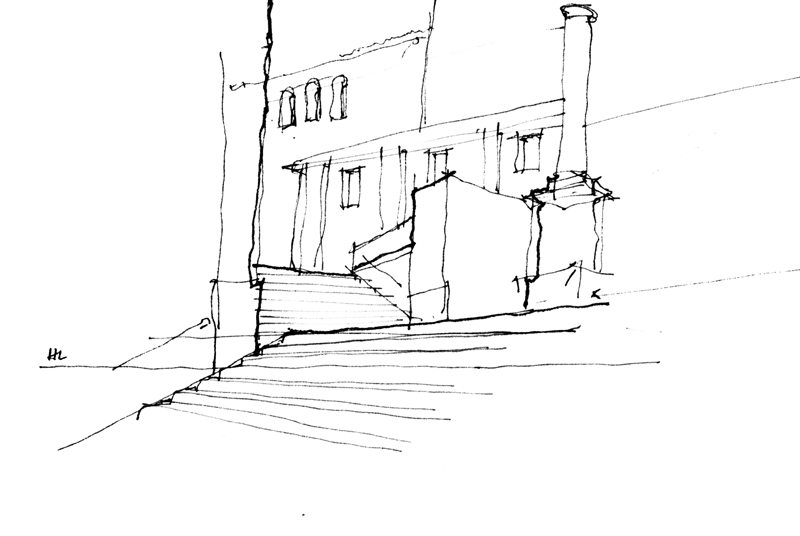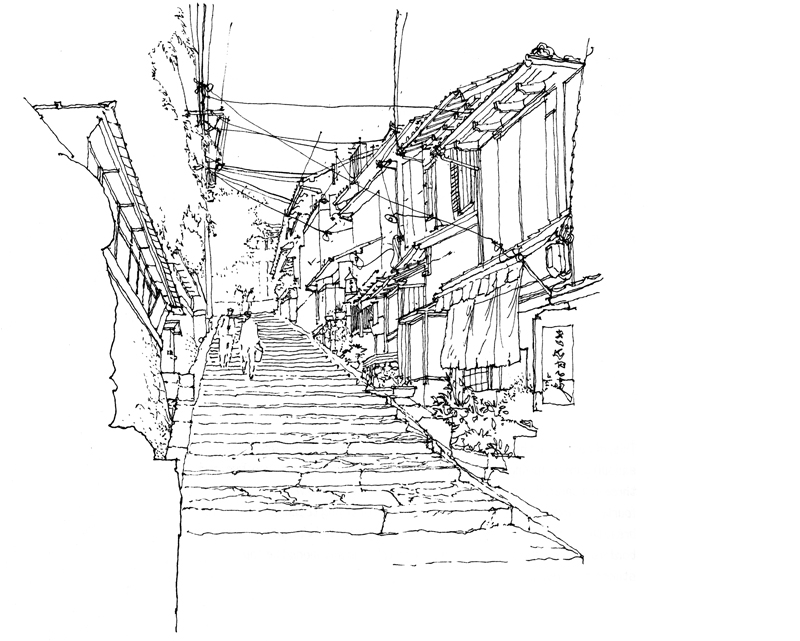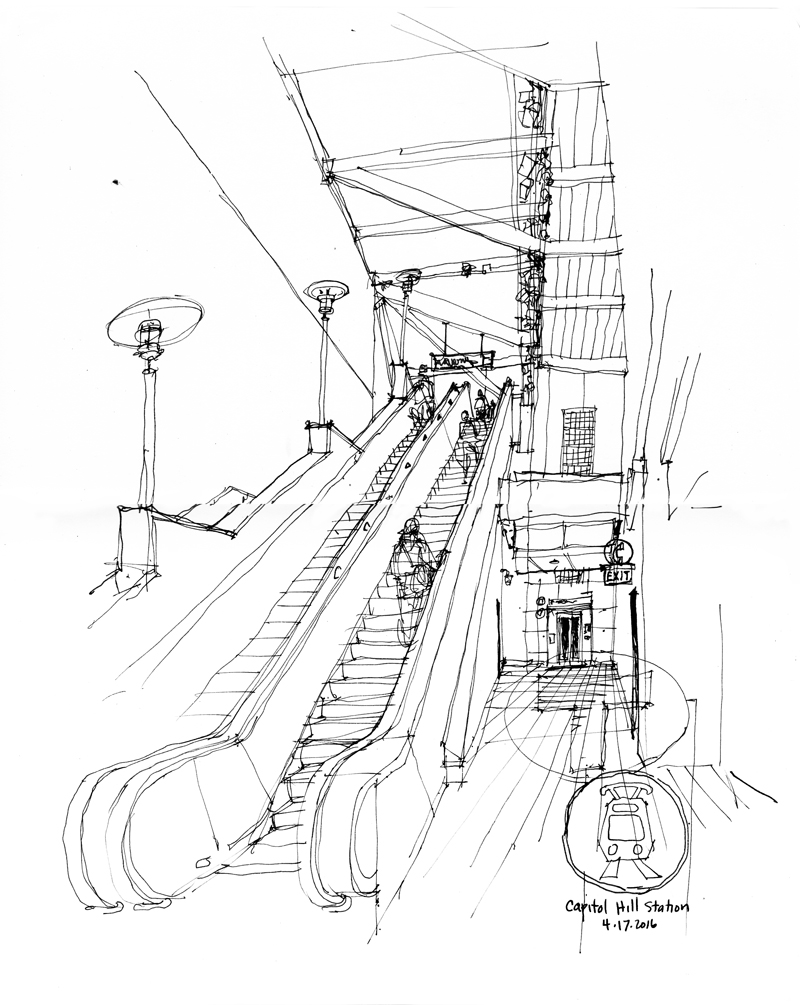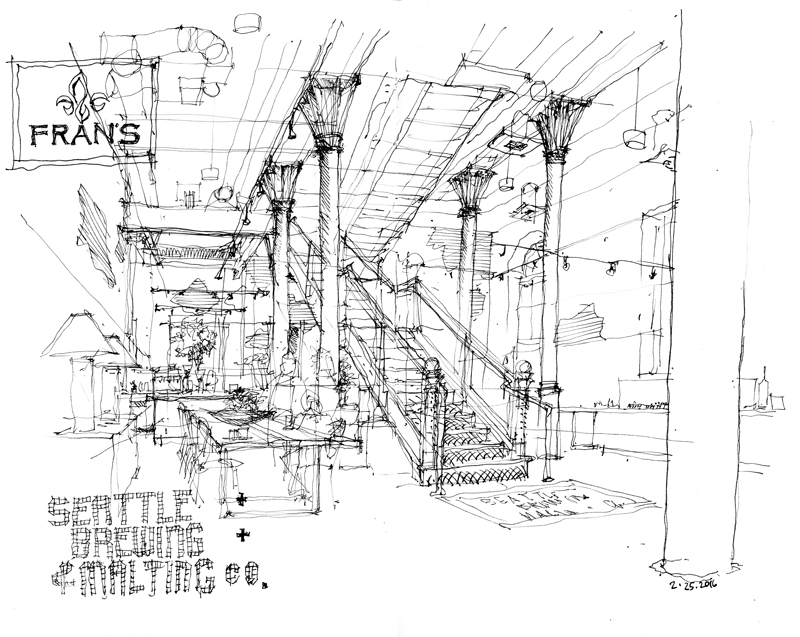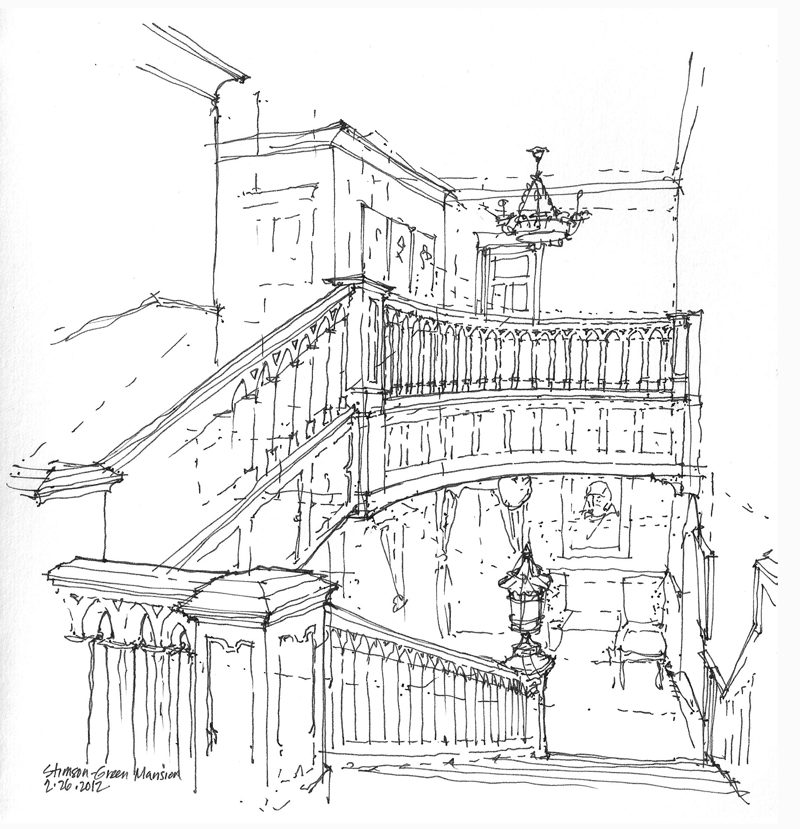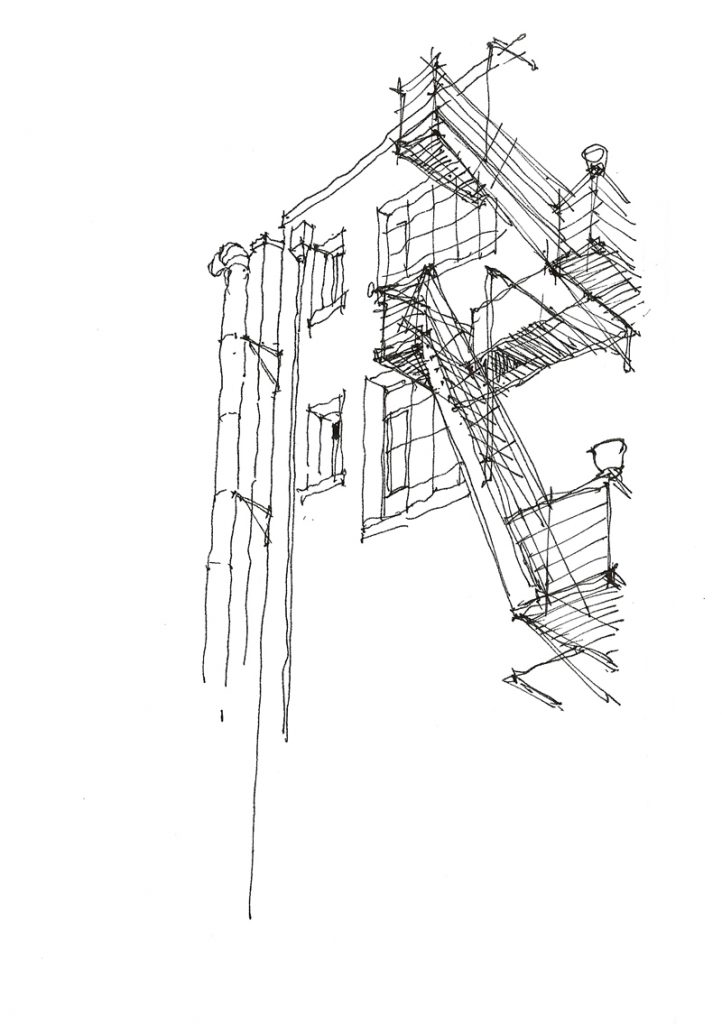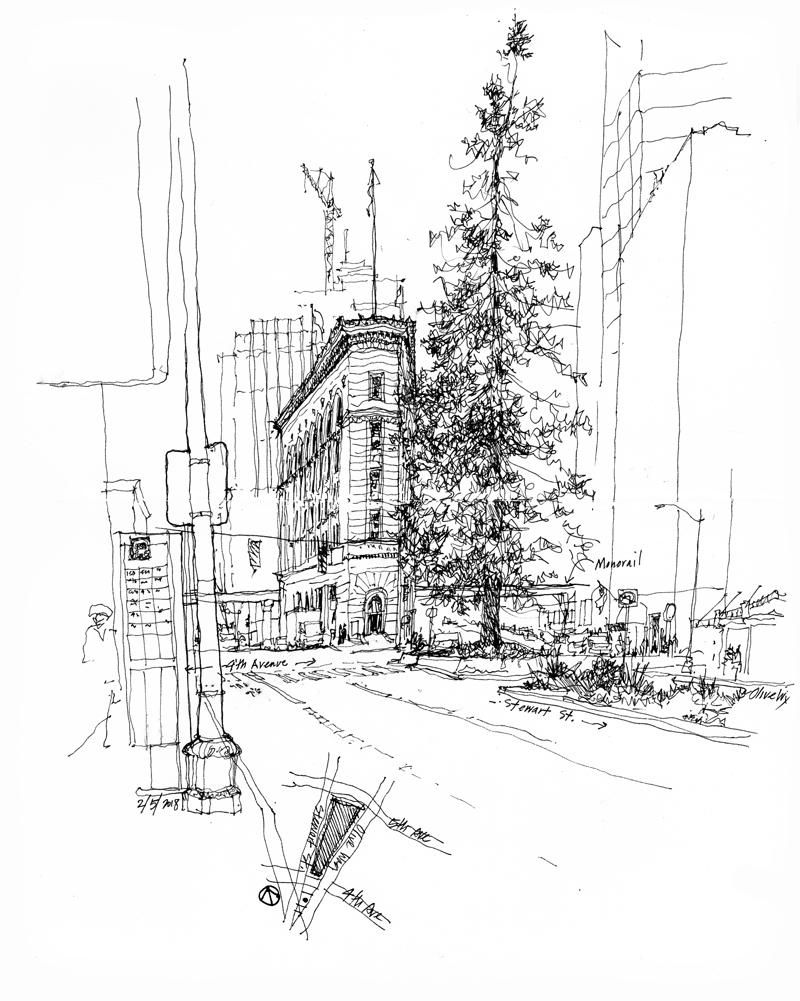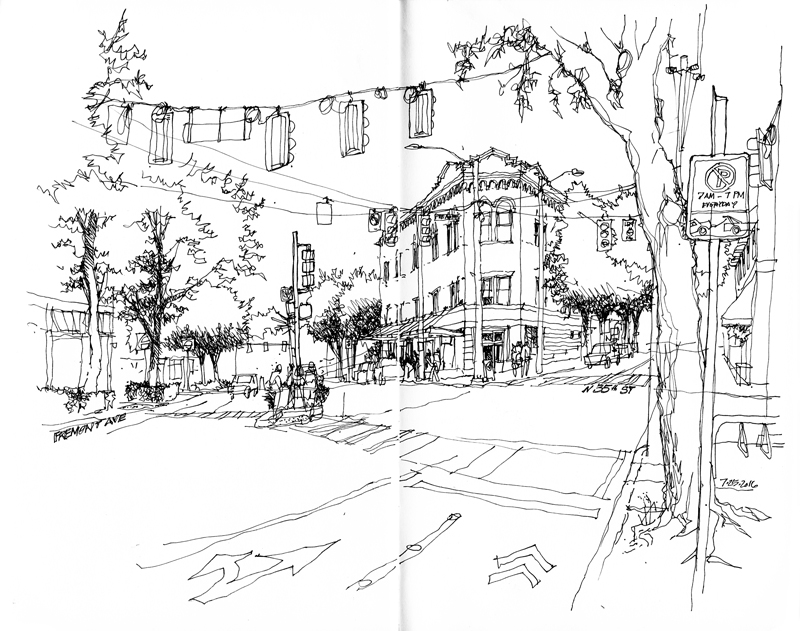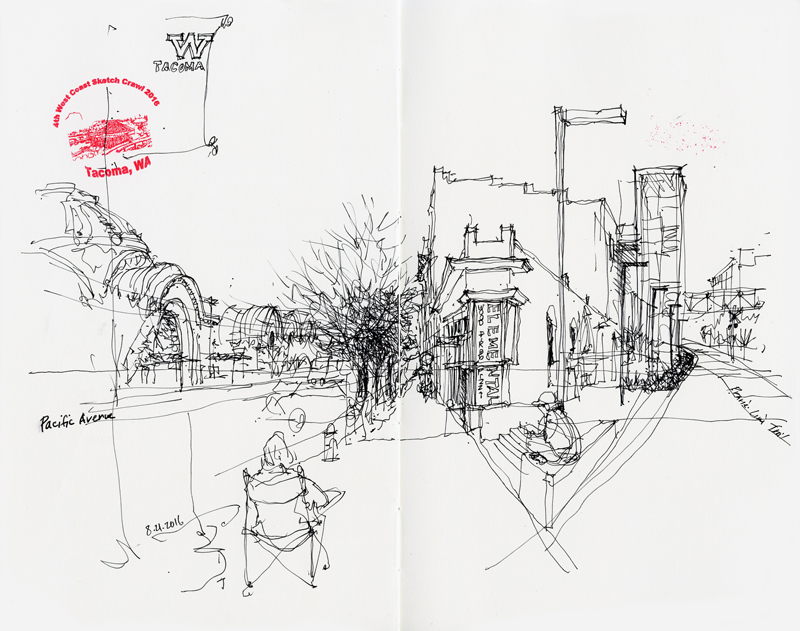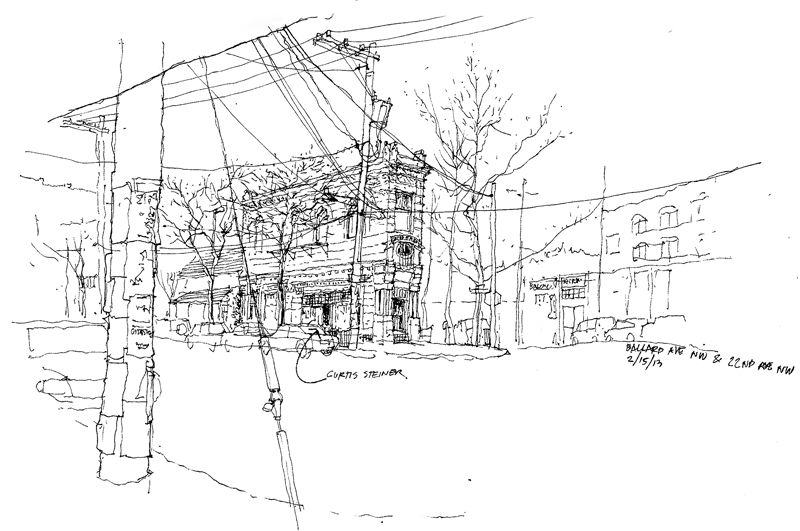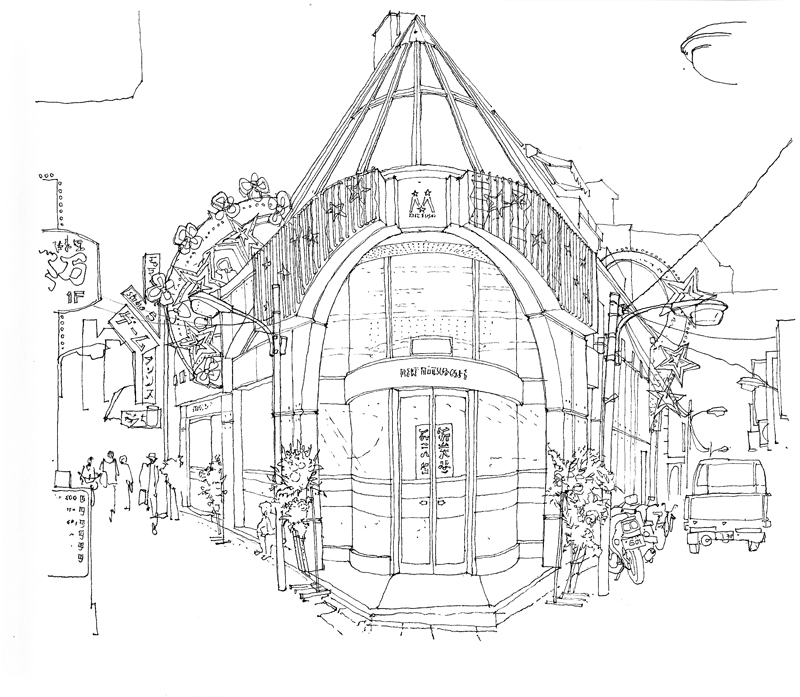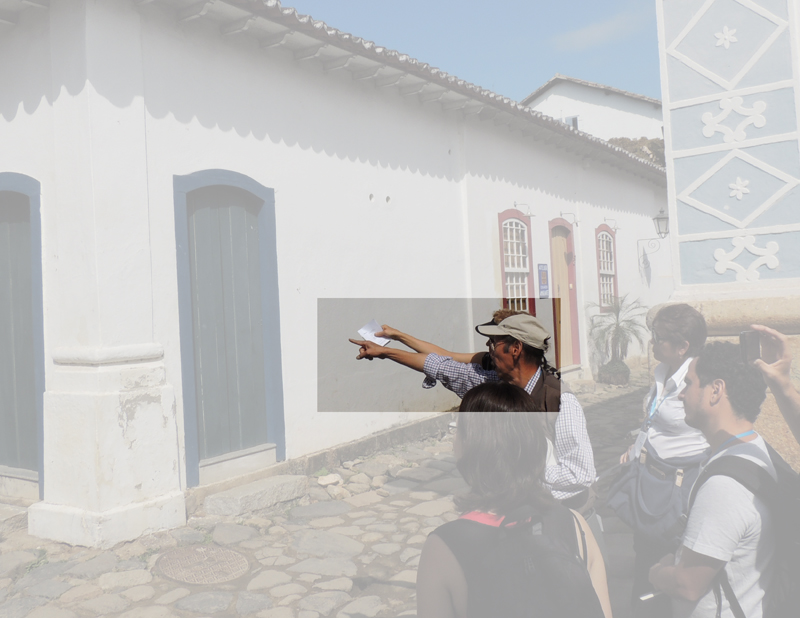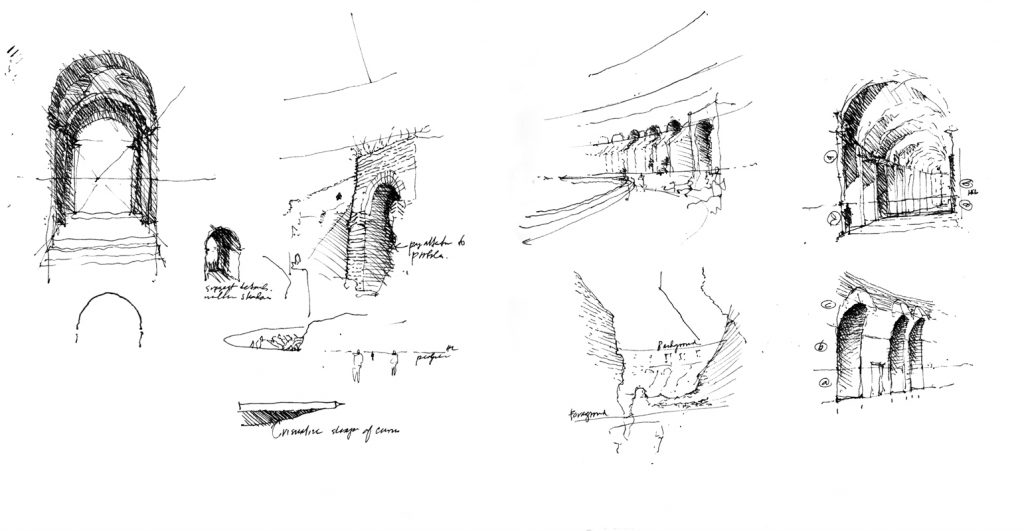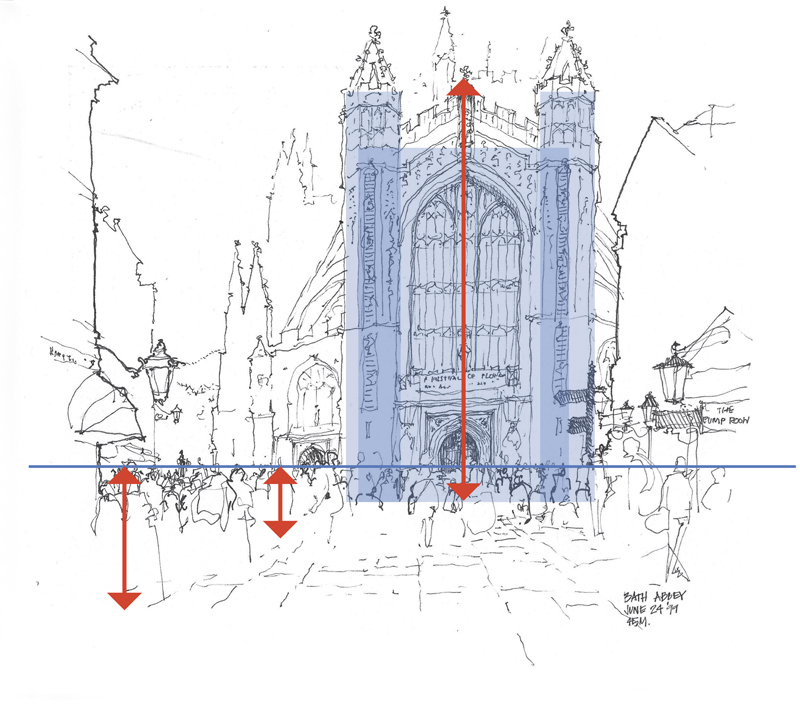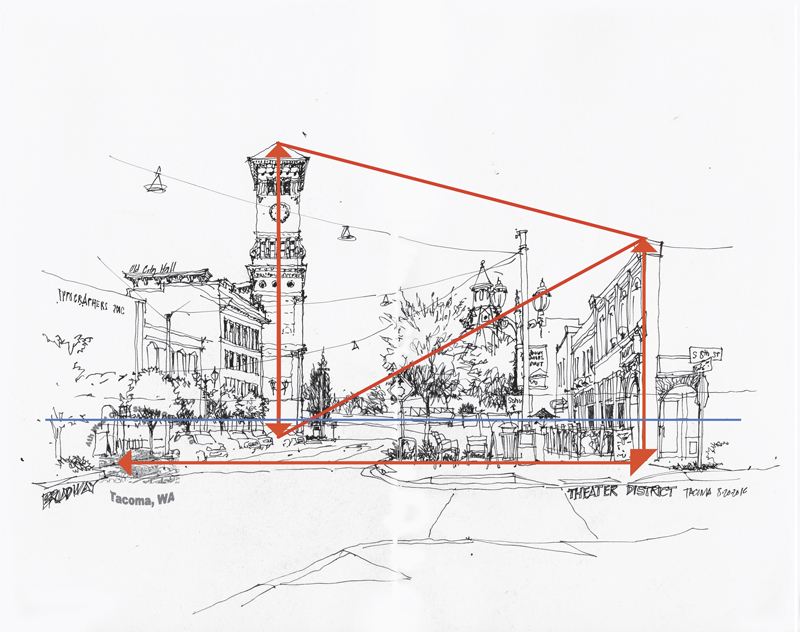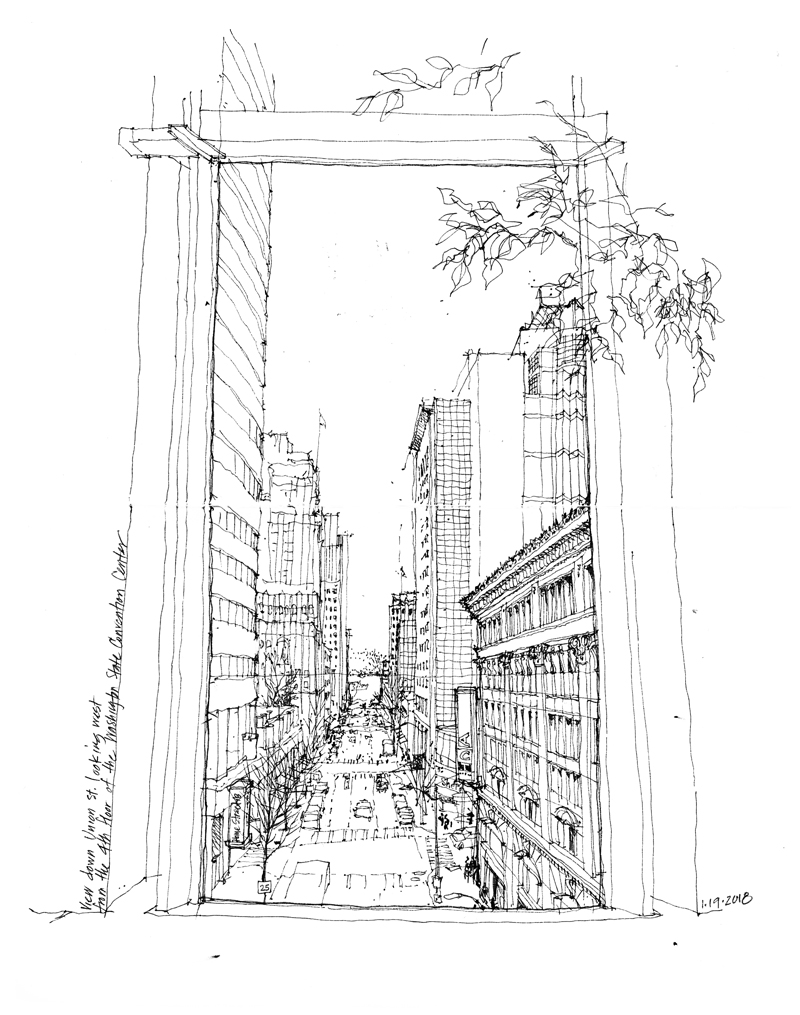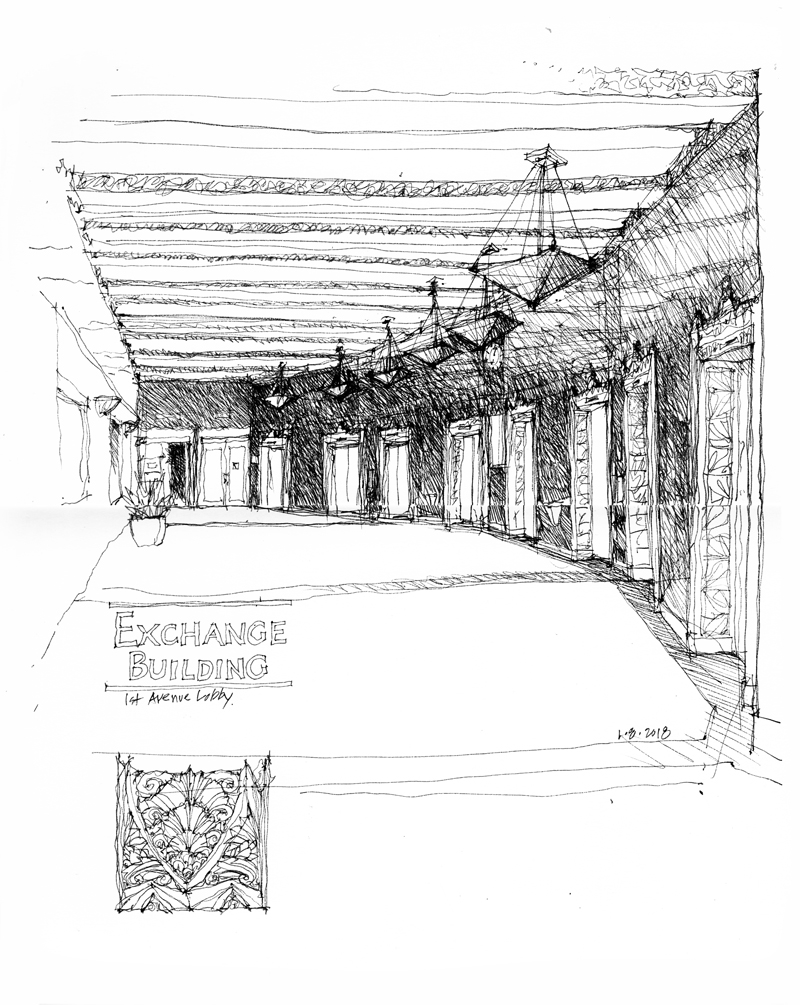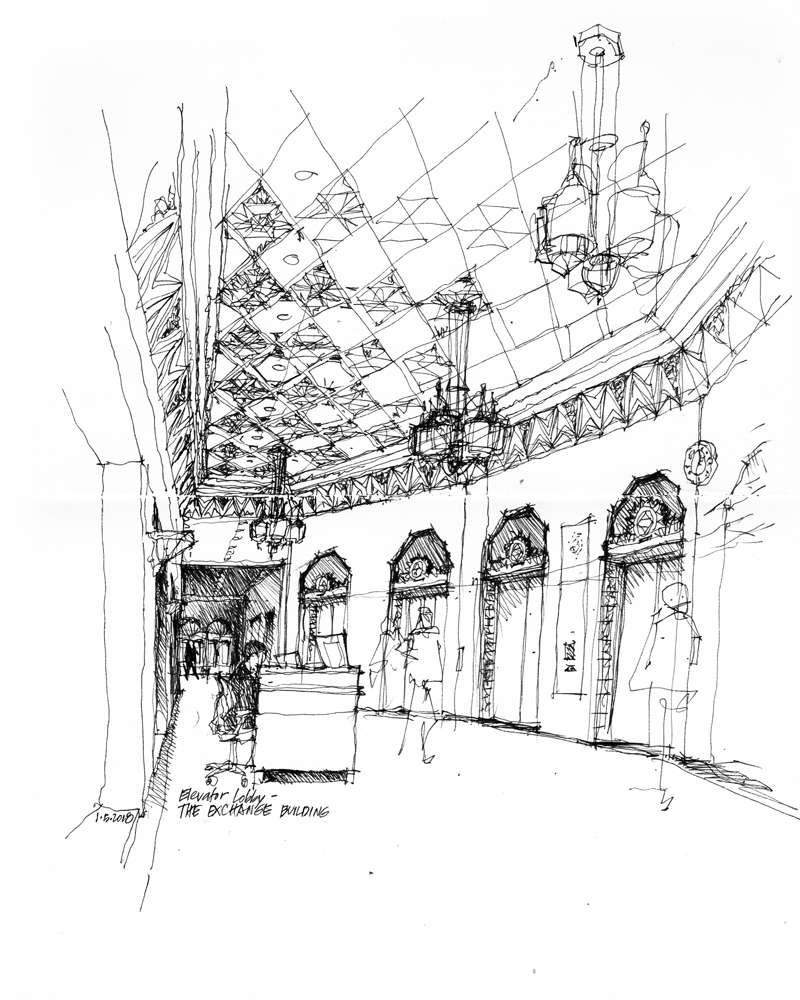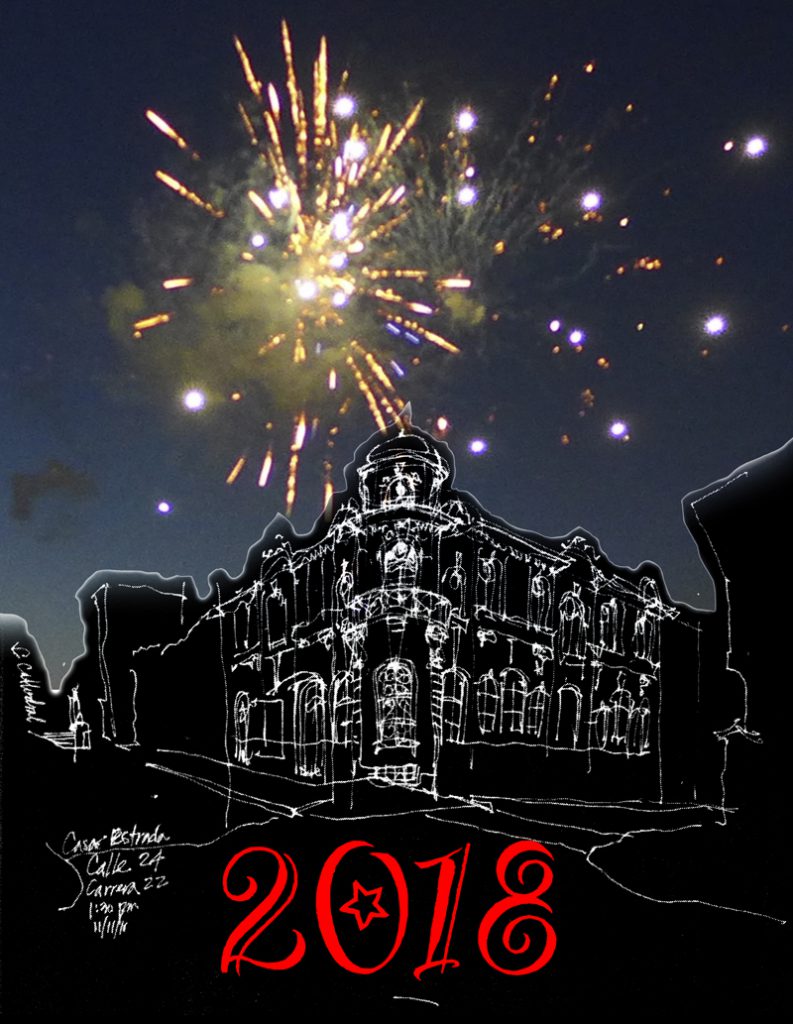Hanging in the lobby of the Seattle Art Museum is this 105-foot long tree sculpture by John Grade. Grade first made a plaster cast of a living 140-year old western hemlock growing along the Middle Fork (hence the name) of the Snoqualmie River east of Seatle. Then he along with hundreds of volunteers used the plaster mold to recreate the form of the tree from thousands of pieces of reclaimed old-growth cedar.
Category Archives: Urban Sketchers
Stairs and Stairways
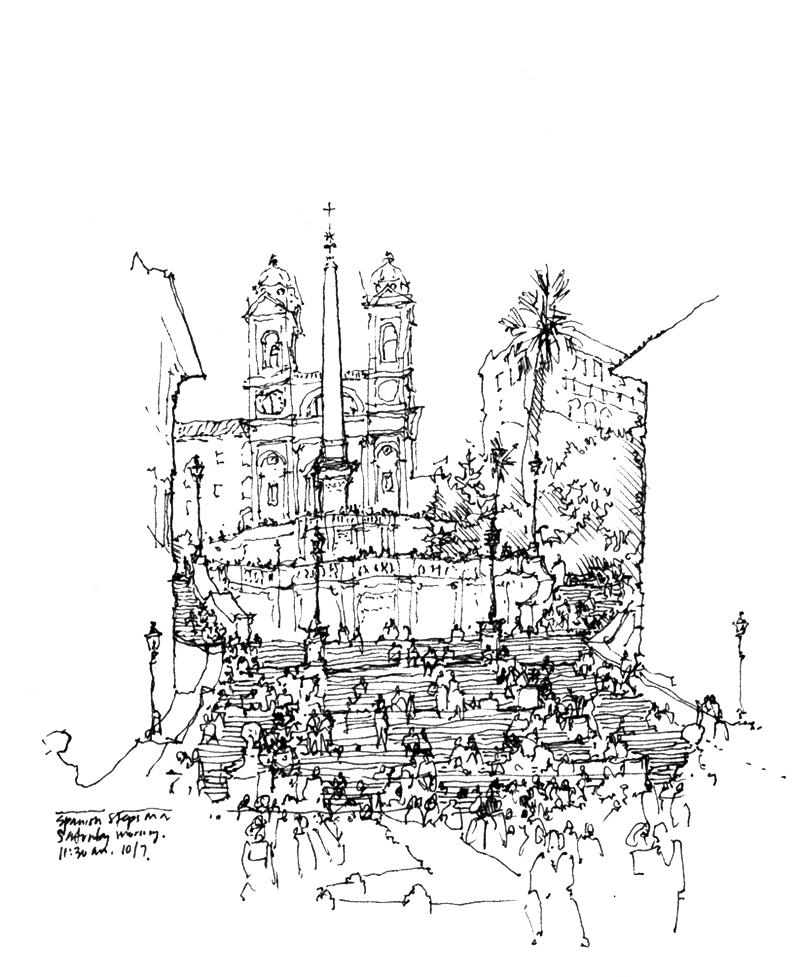 Drawing stairs and stairways in perspective can be daunting because they involve sets of parallel lines that rise or fall as they move away from us and therefore do not converge on the horizon line. Also, their multiple treads and risers make them seem more complex than they are. Here are a few stairways, both exterior and interior, that I have drawn.
Drawing stairs and stairways in perspective can be daunting because they involve sets of parallel lines that rise or fall as they move away from us and therefore do not converge on the horizon line. Also, their multiple treads and risers make them seem more complex than they are. Here are a few stairways, both exterior and interior, that I have drawn.
One key to drawing stairs and stairways is to first establish the levels or landings that the stairs connect and then treat the stairways first as ramps, before subdividing the ramps into risers and treads. I should note here that reproducing the actual number of risers and treads may not matter as much as capturing their proper scale.
The photo above is overlaid with a diagram that shows how the vanishing point for a rising set of parallel lines is aligned vertically with the vanishing point for a horizontal set of lines that lie in parallel vertical planes.
Panama Hotel Tearoom
I joined a few other Seattle Urban Sketchers last Friday at the Panama Hotel, a National Historic Landmark in Seattle’s ID District. This is a view of the tearoom, looking toward the main entrance backlit from the daylight streaming in through the storefront windows.
As a point of comparison, here is a similar view I sketched three years ago when I was seated a little closer to the front of the room. This illustrates how moving just a little bit—back or forward, left or right—can make a significant difference in the resulting view of a space. And also how contrasting tonal values influences our reading of spatial depth.
Times Square Building
This iconic triangular-shaped building, situated between 4th and 5th Avenues where Olive Way splits off of Stewart Street, was designed by Bebb & Gould and completed in 1915 for the editorial offices of the Seattle Times newspaper, which occupied its seven stories until 1930. It was added to the National Register of Historic Places in 1983 and designated as a city landmark in September 1984.
Below are views of buildings that also occupy acutely angled sites in various locations and at different scales.
To Notice
During drawing workshops, I often find myself pointing at things in scenes that students are drawing. What I’m doing is drawing attention to how things are related to each other—certain relationships of size, scale, proportion, and placement—in what we see before us. Paying close attention—not merely learning techniques—is one of the keys to drawing on location.
In his book Leonardo da Vinci, Walter Isaacson attributes many of Leonardo’s accomplishments to his acute powers of observation, which were not innate but honed with practice. And Isaacson believes that “to notice” is something we can all do if we make the attempt.
And so it is important to really focus on what one is seeing, not merely glance at the subject matter, before drawing. As I have often said during my workshops: “Look more and draw less.”
A Westward View
Rainier Tower
On the way home last week after viewing the Andrew Wyeth exhibit at the Seattle Art Museum, I noticed that the low-rise portion of Rainier Square had been demolished, exposing the iconic Rainier Tower to view on all sides. I immediately made a mental note to draw that scene. A few days later, a post by Andika Murandi on the Seattle Urban Sketchers blog reminded me to head downtown to draw Rainier Tower amid the demolition work that is making way for a new 58-story mixed-use highrise. It will be interesting to see how the old and new towers coexist on the same block.
Designed by Minoru Yamasaki in association with NBBJ and the structural engineering firm of Magnusson Klemencic, Rainier Tower is unique for its 11-story high pedestal base that tapers downward, like an inverted pyramid with curving sides. When I first saw Rainier Tower after moving to Seattle in 1980, I remember wondering how the structure could resist toppling over during an earthquake.
One sidenote: I drew this scene with a rollerball pen, which made me miss how sensitive the nib of a fountain pen is to the slightest applications of pressure.
Exchange Building 1st Avenue Lobby
Exchange Building 2nd Avenue Lobby
This is the 2nd Avenue elevator lobby of the Exchange Building, which is situated on Marion Street between 1st and 2nd Avenues in downtown Seattle. John Graham and Associates designed the Art Deco building to house grain, ore, bond, and stock exchanges but the stock market crash of 1929 forced the conversion of its upper floors to offices. Reflecting the building’s original intentions, this lobby incorporates such motifs as sheafs of wheat and bunches of grapes into the Art Deco interior. The exterior of the Exchange Building and both the 1st Avenue and 2nd Avenue lobbies were granted landmark status in 1990 by the Seattle Landmark Preservation Board.

